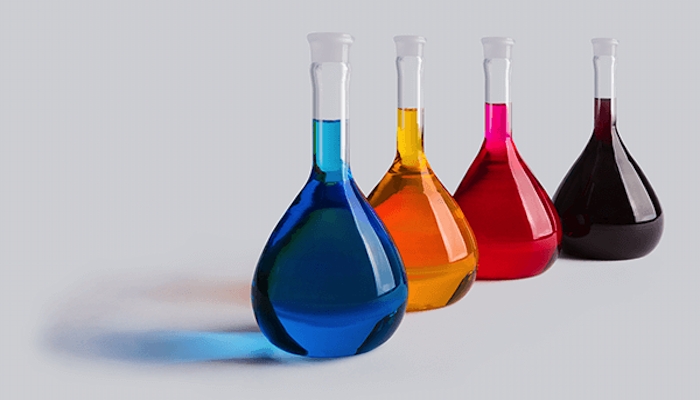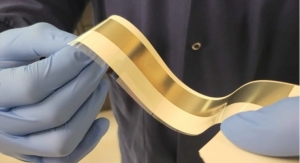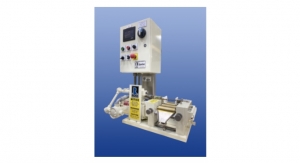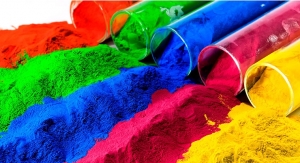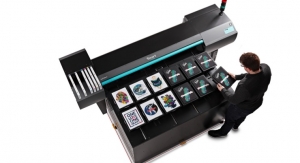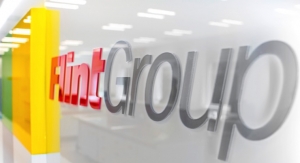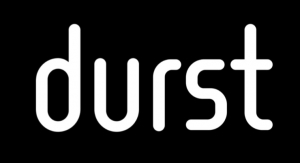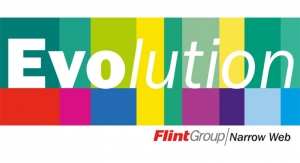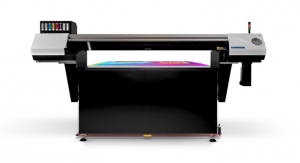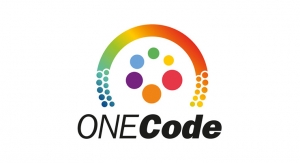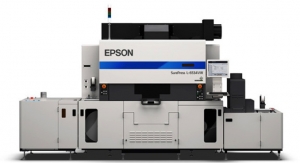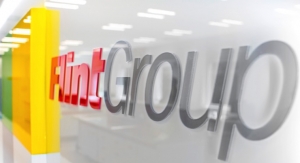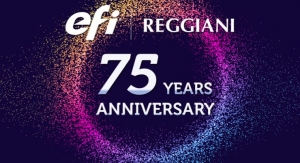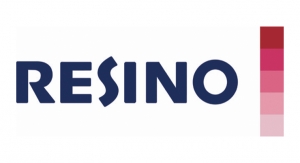David Savastano, Editor08.16.18
Over the years, Memjet has made its name in the digital printing field through its high-quality printheads, modules and inks. On the ink side, the company has focused on dye-based inks for its five main segments: wide format, commercial and packaging, labels, mailing and addressing, and office printing.
Late last year, Memjet launched DuraLink inks, pigment-based inks the company co-developed with Kao Corporation. These new inks are receiving a good reception in the market, and now allow Memjet to offer a full gamut of inkjet ink solutions.
Kim Champion, VP of ink and materials at Memjet, noted that Memjet started formulating inks in-house 12 years ago to complement its printhead technology. However, serving several distinct markets was a challenge.

“We learned early on that while we would love to have a technology that works for all key markets, that is not possible, so we have had to customize our inks for each market,” Champion observed. “Our newest VersaPass ink set built upon the years of ink formulation we had done, and each generation gets better.”
DuraLink adds pigment-based aqueous inks to the Memjet portfolio; this ink offers excellent water and lightfastness, as well as fast drying time.
“Our DuraLink technology includes a pigmented ink that we co-developed with Kao Corporation,” Champion said. “Kao did the custom dispersion development for us. In my experience, Memjet’s partnership with Kao has been one of the most collaborative and productive, and I look forward to continuing the alliance, which will no doubt lead to future technology advancements in ink for Memjet printheads.
“The DuraLink inks have been designed to perform very reliably in our Memjet printheads,” Champion noted. “They get 10 - 20 times the printhead life compared to our dye-based solutions. These inks also have been designed to have good media versatility, from plain paper to matte and glossy. We are working with Michelman to release primers that will allow users to print on coated offset stocks as well as certain packaging materials such as folding carton and coated corrugated, so these inks are focused on a high-end printing environment.
“We are also working to extend this dispersion technology to additional colors, such as orange, green and violet, so we can achieve up to 95% Pantone colors,” added Champion. “We are also doing some early investigations into a white ink.”
Meanwhile, Memjet continues to add to its dye-based lines, creating its new VersaPass DN ink technology designed for the mini-press desktop segment. VersaPass is 100% free of reactive chemistries, which makes it more environmentally friendly.
“All of our dye-based solutions are free of reactive chemistries,” said Jeff Hinds, product manager for Memjet. “They are an aqueous technology, basically 70% water. They are friendlier to the environment than solvent-based inks or toners and have no UV reactive chemistries. There is a hassle factor for reactive chemistries. With UV you need UV curing lamps. For toners you need fusers.”
Hinds noted that there are starting requirements when heading into the development cycle, and sometimes unintended consequences also work out well.
“When we looked at the requirements for the VersaPass DN ink, printhead life was one of the things that we were inclined to improve, and we see a 2X printhead life improvement,” Hinds reported. “We also looked at improving lightfastness, and on certain media, we are seeing up to a 3X improvement in lightfastness, which opens up certain media for us. It has much higher water resistance than typical for dye-based inks. When we do water soak tests they last much longer; we see good results with up to 24-hour water soak tests. It is an unintended benefit that we think will help open up some new applications for us.
“We have three OEMs that have come to market already - Trojan, VIP and New Solutions - that already are using our VersaPass DN technology and we have a number of other OEMs that are going through their testing,” Hinds added. “One of our OEMs is promoting the water resistance aspects and we think it could open up specialty foods labeling. We’re getting great feedback.”
“We are trying to help customers to be able to sell into certain applications,” Hinds said. “We hear from our customers that food manufacturers are more comfortable bringing our labeling systems into their food manufacturing environments because our water-based inks are free from hazardous materials.”
Hinds noted that food and beverage represent 65% of the entire labeling market, which makes ink migration a key issue for printers and brand owners.
“We are trying to help customers to be able to sell into certain applications. We think we have a good message,” Hinds said. “It is a big initiative in the industry. We have done initial work around the characterization of ink migration. We are looking at getting our ink materials on the Swiss Ordinance which will enable compliance against the Nestle Guidance Note on Packaging Inks. We are also giving our OEMs advice on types of materials and functional barriers that are needed to be safe.”
Being environmentally friendly is a core belief for Memjet, and one of the key differentiators for Memjet is its strength in aqueous inkjet ink technology.
“We steer clear of anything on the Nestle and EuPIA exclusion list,” said Champion. “The Nestle Guidance Note has almost become the industry benchmark. We are developing migration test capabilities in-house where we are designing our inks, in our R&D facility in Sydney, Australia, which is allowing us to be more proactive as we design the inks to make sure we are picking the right components that have low migration tendencies and are safe for use.”
“We are enjoying good growth and have pretty aggressive plans in place,” Hinds concluded. “Adding durable pigment solutions takes us into the next step into segments that we probably couldn’t serve before with dye-based solutions. With a dye-based solution, especially in the label segment, it comes with beautiful color, and people want to stick with the high gamut and bright colors that they see.”
Late last year, Memjet launched DuraLink inks, pigment-based inks the company co-developed with Kao Corporation. These new inks are receiving a good reception in the market, and now allow Memjet to offer a full gamut of inkjet ink solutions.
Kim Champion, VP of ink and materials at Memjet, noted that Memjet started formulating inks in-house 12 years ago to complement its printhead technology. However, serving several distinct markets was a challenge.

DuraLink adds pigment-based aqueous inks to the Memjet portfolio; this ink offers excellent water and lightfastness, as well as fast drying time.
“Our DuraLink technology includes a pigmented ink that we co-developed with Kao Corporation,” Champion said. “Kao did the custom dispersion development for us. In my experience, Memjet’s partnership with Kao has been one of the most collaborative and productive, and I look forward to continuing the alliance, which will no doubt lead to future technology advancements in ink for Memjet printheads.
“The DuraLink inks have been designed to perform very reliably in our Memjet printheads,” Champion noted. “They get 10 - 20 times the printhead life compared to our dye-based solutions. These inks also have been designed to have good media versatility, from plain paper to matte and glossy. We are working with Michelman to release primers that will allow users to print on coated offset stocks as well as certain packaging materials such as folding carton and coated corrugated, so these inks are focused on a high-end printing environment.
“We are also working to extend this dispersion technology to additional colors, such as orange, green and violet, so we can achieve up to 95% Pantone colors,” added Champion. “We are also doing some early investigations into a white ink.”
Meanwhile, Memjet continues to add to its dye-based lines, creating its new VersaPass DN ink technology designed for the mini-press desktop segment. VersaPass is 100% free of reactive chemistries, which makes it more environmentally friendly.
“All of our dye-based solutions are free of reactive chemistries,” said Jeff Hinds, product manager for Memjet. “They are an aqueous technology, basically 70% water. They are friendlier to the environment than solvent-based inks or toners and have no UV reactive chemistries. There is a hassle factor for reactive chemistries. With UV you need UV curing lamps. For toners you need fusers.”
Hinds noted that there are starting requirements when heading into the development cycle, and sometimes unintended consequences also work out well.
“When we looked at the requirements for the VersaPass DN ink, printhead life was one of the things that we were inclined to improve, and we see a 2X printhead life improvement,” Hinds reported. “We also looked at improving lightfastness, and on certain media, we are seeing up to a 3X improvement in lightfastness, which opens up certain media for us. It has much higher water resistance than typical for dye-based inks. When we do water soak tests they last much longer; we see good results with up to 24-hour water soak tests. It is an unintended benefit that we think will help open up some new applications for us.
“We have three OEMs that have come to market already - Trojan, VIP and New Solutions - that already are using our VersaPass DN technology and we have a number of other OEMs that are going through their testing,” Hinds added. “One of our OEMs is promoting the water resistance aspects and we think it could open up specialty foods labeling. We’re getting great feedback.”
“We are trying to help customers to be able to sell into certain applications,” Hinds said. “We hear from our customers that food manufacturers are more comfortable bringing our labeling systems into their food manufacturing environments because our water-based inks are free from hazardous materials.”
Hinds noted that food and beverage represent 65% of the entire labeling market, which makes ink migration a key issue for printers and brand owners.
“We are trying to help customers to be able to sell into certain applications. We think we have a good message,” Hinds said. “It is a big initiative in the industry. We have done initial work around the characterization of ink migration. We are looking at getting our ink materials on the Swiss Ordinance which will enable compliance against the Nestle Guidance Note on Packaging Inks. We are also giving our OEMs advice on types of materials and functional barriers that are needed to be safe.”
Being environmentally friendly is a core belief for Memjet, and one of the key differentiators for Memjet is its strength in aqueous inkjet ink technology.
“We steer clear of anything on the Nestle and EuPIA exclusion list,” said Champion. “The Nestle Guidance Note has almost become the industry benchmark. We are developing migration test capabilities in-house where we are designing our inks, in our R&D facility in Sydney, Australia, which is allowing us to be more proactive as we design the inks to make sure we are picking the right components that have low migration tendencies and are safe for use.”
“We are enjoying good growth and have pretty aggressive plans in place,” Hinds concluded. “Adding durable pigment solutions takes us into the next step into segments that we probably couldn’t serve before with dye-based solutions. With a dye-based solution, especially in the label segment, it comes with beautiful color, and people want to stick with the high gamut and bright colors that they see.”

